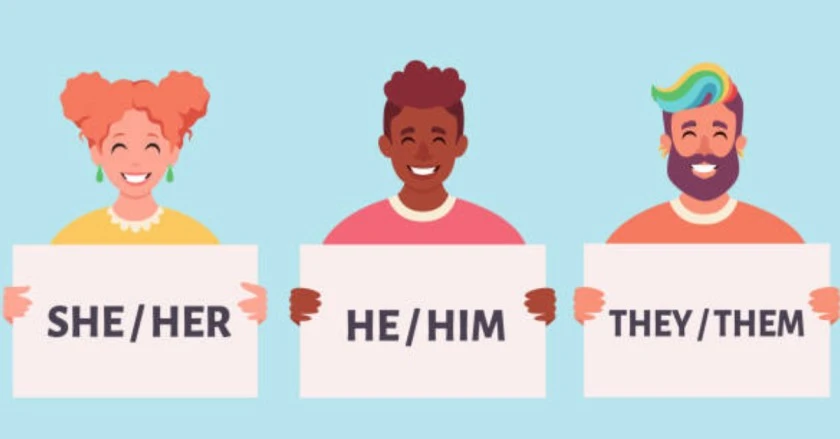Pronouns are an integral part of language, serving as efficient substitutes for nouns. They play a crucial role in enhancing the flow of sentences while avoiding repetitive use of specific names. Let’s delve into the definition, types, examples, and the evolving landscape of pronouns in this comprehensive exploration.
Introduction
A. Definition of Pronouns
Pronouns, often overlooked but indispensable, serve as linguistic tools replacing nouns to avoid redundancy. They play a vital role in maintaining coherence and brevity in communication.
B. Importance of Pronouns in Language
Understanding the significance of pronouns is crucial for effective communication. Pronouns enhance readability, streamline language, and contribute to the overall fluency of speech and writing.
C. Brief Overview of Pronoun Types
Before we dive into the specifics, let’s briefly overview the primary categories of pronouns, setting the stage for a detailed exploration.

Understanding Pronouns
Pronouns, in their simplest form, are words that substitute for nouns in a sentence. They facilitate communication by eliminating the need to repeatedly use a specific noun. Examples of common pronouns include “he,” “she,” “it,” and “they.”
Types of Pronouns
Personal Pronouns
Personal pronouns, such as “I,” “you,” “he,” and “she,” replace specific people or things in a sentence, adding clarity and conciseness.
Demonstrative Pronouns
Demonstrative pronouns, like “this” and “those,” point to specific items or groups, helping to distinguish them in conversation.
Relative Pronouns
Relative pronouns, including “who,” “which,” and “that,” connect clauses and provide additional information about a noun.
Interrogative Pronouns
Interrogative pronouns, like “who,” “what,” and “which,” introduce questions, prompting further inquiry.
Indefinite Pronouns
Indefinite pronouns, such as “anyone” and “everything,” refer to nonspecific people or things, broadening the scope of a sentence.

Functionality of Pronouns in Sentences
Pronouns contribute significantly to sentence flow, preventing monotony and enhancing overall readability. By replacing nouns, they maintain coherence without sacrificing clarity.
Common Pronoun Mistakes
Despite their utility, pronouns can be a source of grammatical errors. Avoiding mistakes involves careful proofreading and a keen awareness of pronoun-antecedent agreement.
Pronouns in Everyday Communication
In casual conversations, pronouns streamline communication, making dialogue more dynamic. However, understanding social nuances is essential for effective pronoun usage.
Pronouns in Writing: Tips and Tricks
Writers can optimize their use of pronouns by following guidelines for variety and inclusivity. Striking the right balance ensures engaging and polished writing.
Pronouns in Different Languages
The use of pronouns varies across languages, reflecting cultural and linguistic differences. Exploring these variations provides valuable insights into diverse communication styles.
Evolution of Pronouns
Pronouns have evolved over time, influenced by linguistic shifts and societal changes. Examining historical contexts offers a fascinating glimpse into language development.
Pronouns in Formal Settings
Formal writing demands precision in pronoun usage. Navigating the nuances of professional communication requires adapting to evolving standards.
Teaching Pronouns: Strategies for Educators
Educators play a pivotal role in instilling proper pronoun usage in students. Resources and strategies that promote inclusive language contribute to a positive learning environment.
Future Trends in Pronoun Usage
As language evolves, so do pronouns. Technological advancements and cultural shifts continue to shape the way pronouns are used in contemporary communication.
Pronouns and Identity
Pronouns are not just linguistic tools; they are a form of self-identification. Recognizing and respecting diverse pronoun choices fosters inclusivity.
Pronoun Examples and Exercises
To solidify understanding, here are practical examples and interactive exercises. Applying pronoun concepts reinforces learning and improves language proficiency.
Conclusion
In conclusion, pronouns are the unsung heroes of language, enabling efficient and clear communication. Embracing proper pronoun usage fosters inclusivity and contributes to the richness of linguistic expression.
A. Summarizing the Significance of Pronouns
In wrapping up our exploration, we underscore the pivotal role pronouns play in effective communication, emphasizing their role in language precision.
B. Encouraging Continued Learning
Language is ever-evolving, and a continuous exploration of its intricacies ensures mastery. Encourage readers to delve deeper into language nuances.
C. Final Thoughts on Pronoun Usage
Closing with reflections on the artistry of language and the beauty of precision, we leave readers with a profound appreciation for the unsung heroes of grammar.
FAQ’s
What are the list of Pronoun?
In Present day English the individual pronouns include: “I,” “you,” “he,” “she,” “it,” “we,” “they,” “them,” “us,” “him,” “her,” “his,” “hers,” “its,” “theirs,” “our,” “your.” Own pronouns are utilized in proclamations and orders, however not in questions; inquisitive pronouns (like “who,” “whom,” “what”) are utilized there.
How many types of pronoun Do we have?
The Seven Kinds of Pronouns. There are seven kinds of pronouns that both English and English as a second language scholars should perceive: the individual pronoun, the decisive pronoun, the inquisitive pronoun, the relative pronoun, the endless pronoun, the reflexive pronoun, and the concentrated pronoun.
Why are pronouns important in language?
Pronouns enhance sentence flow and prevent repetitive use of nouns, making communication more efficient.
What are some common pronoun mistakes to avoid?
Common mistakes include pronoun-antecedent agreement errors and misuse of gender-specific pronouns.
How do pronouns contribute to identity?
Pronouns serve as a form of self-identification, allowing individuals to express their gender and identity.
